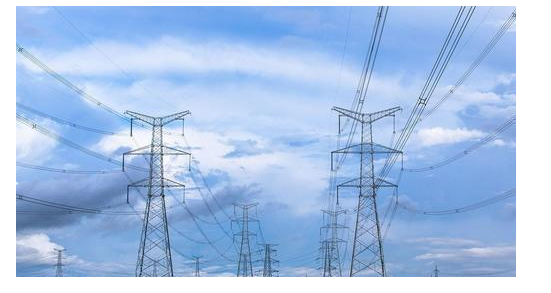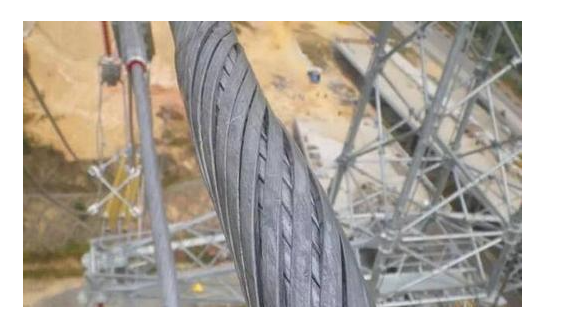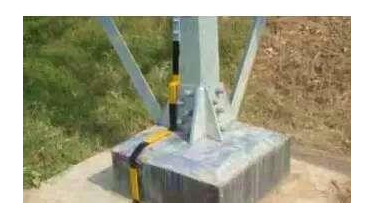This paper mainly describes the structure of overhead line, the selection of each component requirements, line running environment and line calculation with the combination of meteorological conditions, overhead line design procedures. Understand the main parameters of mechanical and physical properties of wire; Master the mechanical influence of meteorological conditions on conductors and the formation of combined meteorological conditions, and understand the basic flow of circuit design.
Classification and structure of overhead transmission lines
1. Classification of transmission lines
Power line is an integral part of the power system, which is responsible for the transmission and distribution of electric energy. Lines that transmit electrical energy from a source to an electric load center are called transmission lines. In order to reduce the loss of electric energy in the transmission process, transmission lines adopt different voltage levels according to the transmission distance and transmission capacity. At present, the different voltage levels used in China are 35, 60, 110, 220, 330, 500kV, etc. In China, the line of 35 ~ 220kV is called high voltage transmission line, and the line of 330 ~ 500kV is called ultra high voltage transmission line. In addition, the line responsible for the task of distributing electricity is called a distribution line. The voltage levels of China’s distribution lines are: 380V/220V, 6KV, 10KV, which refers to the lines below 1kV as low-voltage distribution lines, 1 ~ 10KV lines as high-voltage distribution lines.
Transmission lines can be divided into cable lines and overhead lines according to their structure. Compared with cable line, overhead line has many obvious advantages, such as simple structure, short construction period, low construction cost, convenient maintenance, good heat dissipation performance, large transmission capacity and so on. This paper only introduces the basic knowledge of high voltage overhead transmission lines.
2. Structure of overhead transmission lines
Transmission lines are generally used to connect regional power plants with substations on the receiving side. To keep a certain distance between the live wires of the power transmission line and the ground, use poles and towers to support the wires, as shown in Figure 1-1. The horizontal distance between the center lines of adjacent towers is called the gear distance. A tensioning section is formed by several distance between two adjacent base towers. As shown in Figure #5 ~ #9, the tensioning section is composed of four distance. If there is only one distance in the tensioning section, it is called isolated, as shown in the figure between tower #9 and tower #10. A transmission line is always composed of multiple tensioning segments, including isolated segments.
Some terms relating to overhead lines
First of all, some basic terms related to overhead line structure are explained as follows:
(1) Gear distance – The horizontal distance between the suspension points of the wires on two adjacent towers is called the gear distance, which is usually expressed by, as shown in Figure 1-2.
(2) sag (relaxation) – the distance between any point of the wire and the suspension point in the straight direction is called sag, also called relaxation.
Generally, sag refers to the maximum sag in one gear unless otherwise specified, and is usually indicated by the letter F, as shown in Figure 1-2. When the wire suspension point is equal (elevation is equal), the maximum sag in the gear distance in the center; When the wire suspension point is not equal in height (elevation is not equal), the maximum sag in the gear is approximately at the center of the gear distance.
(3) Limit – The minimum allowable distance between the wire and the ground is called the limit, as shown by H in Figure 1-2. The value of limiting distance is specified in detail in the technical regulations for the design of Overhead transmission lines and the Technical Regulations for the design of overhead distribution lines issued by the Ministry of Electric Power of Our country. The main components of overhead transmission line are conductor, lightning conductor, insulator, tower, cable and foundation
Components of overhead transmission lines
We give a brief description of the basic functions and types of the components of overhead circuits.
1, the conductor
Wires are used to carry electric current and electrical energy. Generally, transmission lines use single conductor for each phase, but for ultra high voltage and large capacity transmission lines, in order to reduce corona to reduce power loss and reduce interference to radio and TELEVISION, phase split conductors are mostly used, that is, two, three, four or more wires (usually fixed in a ring) are used.
2. Lightning conductor and grounding body
The lightning conductor is hung on the top of the pole tower, and is connected with the grounding body through the grounding wire on each base pole tower. When a lightning cloud discharge strikes a lightning line, the lightning conductor is located above the conductor, and the lightning current overground body is discharged to the earth. In this way, the probability of lightning strikes the conductor is reduced, the insulation of the line is protected from the damage of lightning overvoltage, and the lightning protection is provided to ensure the safe operation of the line. Only above 110kV voltage grade line is generally set up, its material is usually galvanized steel strand.
3, tower
The pole tower is used to support the conductor and the lightning conductor and its accessories, and to keep a certain safe distance between the conductor, the lightning conductor and the tower, as well as between the conductor and the ground and crossing objects or other buildings.
4. Insulators and insulation strings
Insulators are the main components of line insulation, which are used to support or suspend the wire to insulate it from the tower and ensure that the line has reliable electrical insulation strength. Because it is not only subjected to mechanical force and voltage action, but also to withstand the erosion of harmful gases in the atmosphere.
Therefore, it is required to have sufficient mechanical strength, insulation level and corrosion resistance.
5, hardware
Transmission line fittings play the role of supporting, fixing and connecting protection wires and lightning protection wires in overhead transmission lines. And can make the wiring firm. There are many kinds of gold fittings, which can be divided into five categories: wire clamp, connecting, protection and wire drawing according to their properties and uses.
Pole tower foundation is fixed on the ground to ensure that the pole tower does not tilt, collapse, subsidence and other facilities. If the reinforced concrete rod is directly buried in the soil, because the cross sectional area of the pole is small, the pole will sink in the general soil. At this time to prevent the pole sinking, often in the bottom of the pole cushion a large area of reinforced concrete plate – chassis, chassis is to prevent the pole sinking foundation. On the one hand, the function of the cable is to improve the strength of the tower, bear the external load on the tower force, so as to reduce the material consumption of the tower; On the other hand, together with the wire rod and wire tray, to fix the tower on the ground, to ensure that the tower does not tilt, collapse. Tower foundation according to the different terrain, geology and construction conditions, the type used is also different.
Post time: Jul-11-2022










